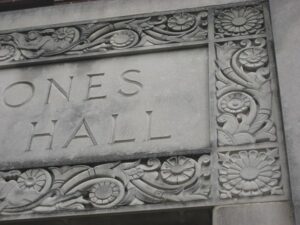Earlier this week, the Fresno County Board of Supervisors voted to place a new tax measure on the ballot designed to raise funds to improve the facilities at Fresno State University. The quarter-cent tax will appear on the ballot in March 2024. If approved, the county will use the funds to pay for neglected maintenance on campus buildings at Fresno State University. The money could also fund new academic programs, scholarships, and new facilities at Fresno State.
Fresno State University is part of the California State University (CSU) system. The campus serves about 25,000 students and offers about 60 degree programs.
To be clear, this kind of funding for a state university would not happen in Michigan for at least two reasons. First, funding for state universities does not come from direct tax assessments. Community colleges can levy taxes, as can county governments. But county governments cannot assess taxes for the benefit of a state university.
Second, the State of Michigan does not pay for neglected maintenance. For some crazy reason, the State of Michigan expects its colleges and universities to budget for and perform maintenance on their facilities in a timely manner without additional state assistance.
When you think about it, it’s not an unreasonable expectation. Neglected maintenance costs a lot of money. In fact, it is the most expensive way to approach ordinary maintenance and capital refreshes. Consistently ignoring maintenance raises the cost of the repair by double-digit percentages each year. It is effectively applying credit card interest rates to maintenance costs.
The Michigan Legislature won’t supply money for colleges and universities to pay for neglected maintenance projects, but that doesn’t mean there’s nothing Lansing can do about the issue.
Neglected maintenance contributes to attendance costs, student loan debt
The issue of neglected maintenance is not limited to college and universities but correcting it at these institutions is essential. Neglected maintenance costs are one of the major drivers of the cost of attendance for students. That means a college or university’s unwillingness to fund ordinary maintenance and neglected maintenance costs is a contributor to the student loan crisis.
To correct the issue, Lansing lawmakers should consider legislation that requires any institution that receives tax dollars to devote an industry-standard percentage of its annual budget to ordinary facilities maintenance and reducing its maintenance backlog. In other words, WCC would not be able to budget $300,000 per year for maintenance activities. Deliberately skimping on facilities maintenance ultimately raises the cost of student attendance without addressing the institution’s maintenance issues.
To be clear, it is the Trustees’ job to ensure that the institution properly budget for maintenance. For institutions whose trustees permit the underfunding of facilities maintenance, the legislation could permit the state to place the institution into state receivership until the maintenance budget is corrected.
Until the state begins to DEMAND that colleges and universities appropriately fund maintenance on the campuses of public institutions, administrators and trustees will not prioritize it. Proper maintenance funding is one of the most effective ways of reducing an institution’s expenses. There is no reason not to do this.
Photo Credit: Dennis Sylvester Hurd , via Flickr

























